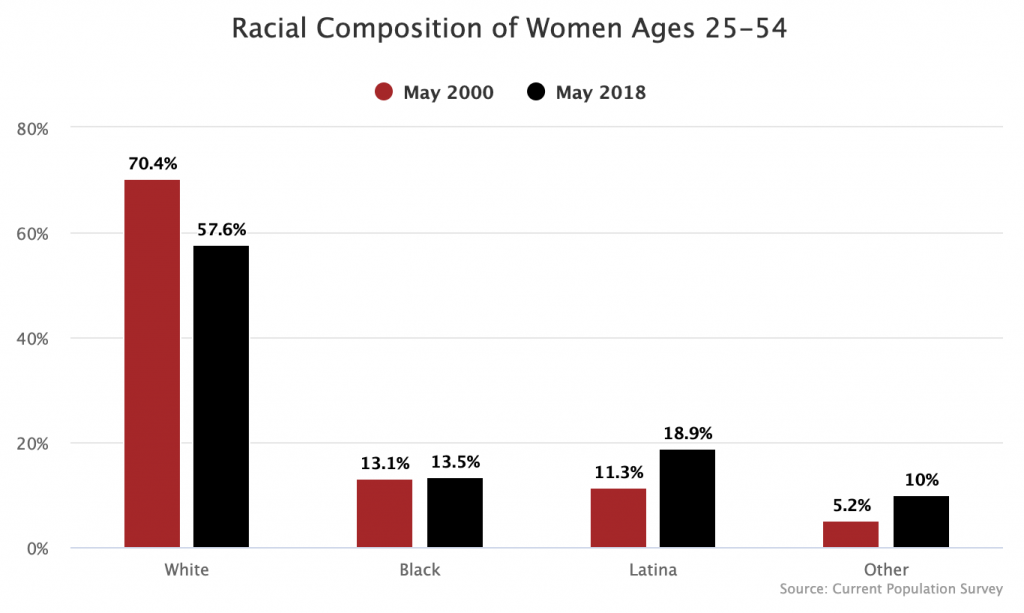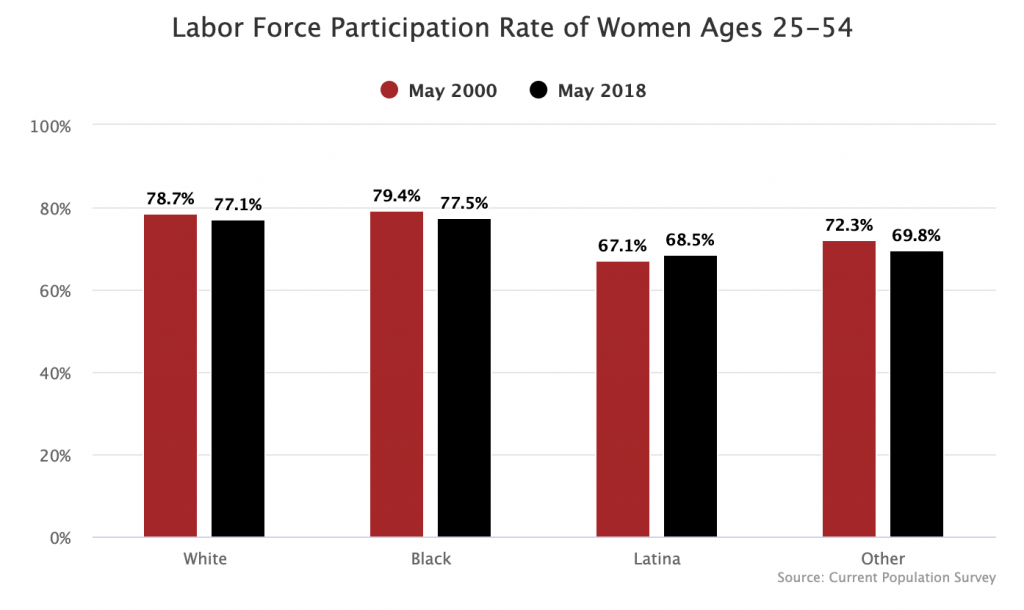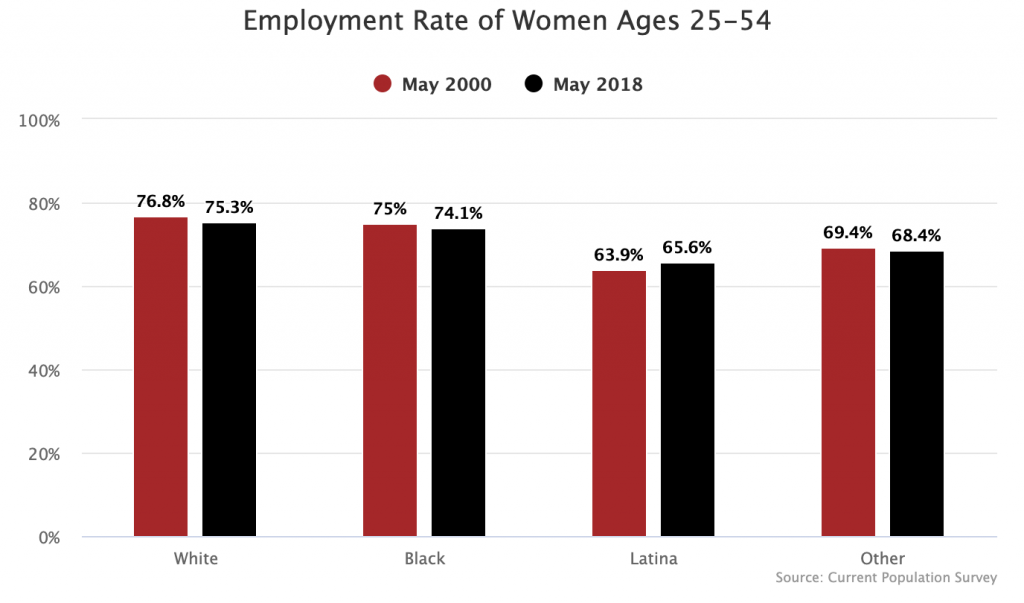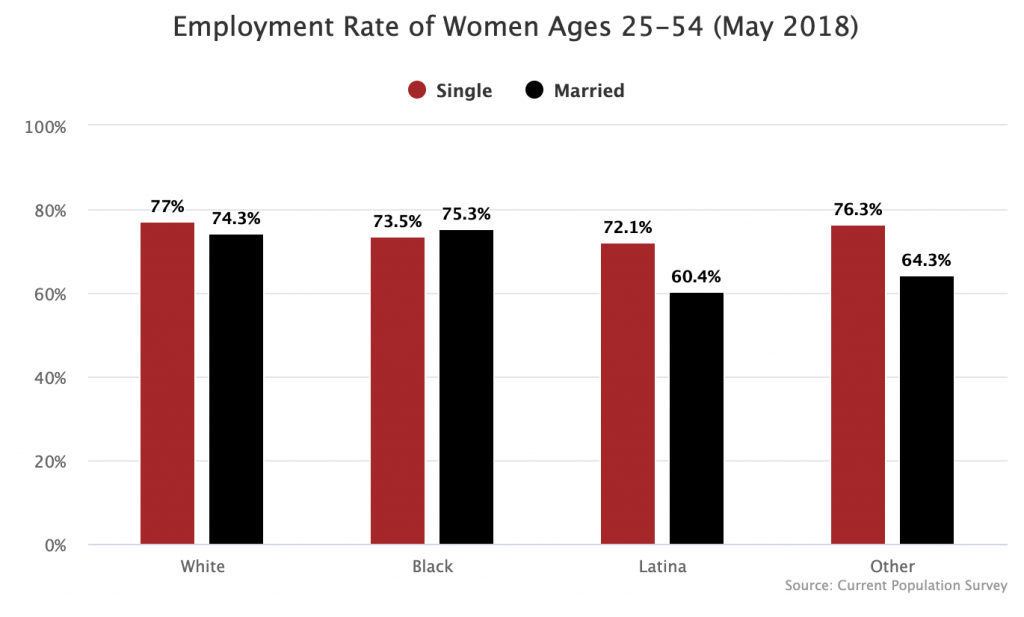Women’s labor force participation and employment peaked around 2000. Many have speculated since then about what caused this stall out and slight decline, with leading theories emphasizing the Great Recession and the lack of family benefits in the US like subsidized child care. There is no doubt some truth to these other theories, but there is another more straightforward cause of this decline: the changing racial demographics of the country.
In May of 2000, white women made up 70.4 percent of all women between the ages of 25 and 54. By May of 2018, that number was down to 57.6 percent. Over that same period, Latina women went from 11.3 percent of the population to 18.9 percent. The residual “other” group also grew from 5.2 percent to 10 percent.

This demographic shift matters because Latina and “other” women typically have lower labor force participation and lower employment rates than other racial groups.


These demographic changes explain 43 percent of the overall decline in women’s labor force participation and 52 percent of the overall decline in the women’s employment rate between May 2000 and May 2018. This still leaves the other half of the picture unexplained. The recession and dearth of family benefits no doubt go a long way towards explaining that other half.
Why do Latinas have lower employment rates? Breaking each group of women down by marital status tells the story pretty well.

Although there are differences, single women of all racial groups have relatively similar employment rates. But there are big gaps for married women. The employment rate of married Latina women is 13.9 points lower than the employment rate of married white women. For “other” women, another growing group, it is 10 points lower.
What appears to be going on here is the same thing cross-country researchers have identified in Europe: countries with larger Catholic populations (or history) tend to have fewer women workers than countries with smaller Catholic populations (or history). Put more directly: Latino people appear to have more conservative gender attitudes on average. What this means is that, for as long as Latinos grow as a share of the US population, overall indicators of women’s involvement in the workforce will likely face headwinds, at least in the short term.

